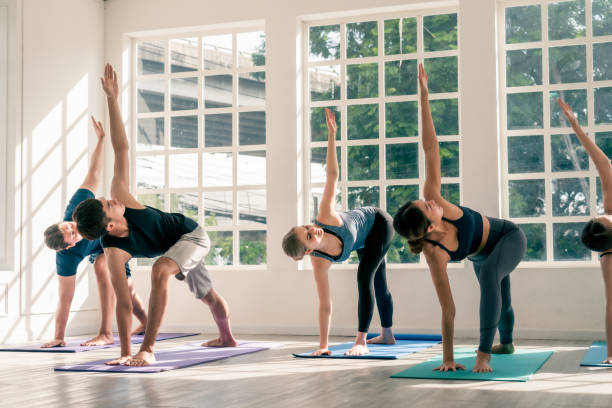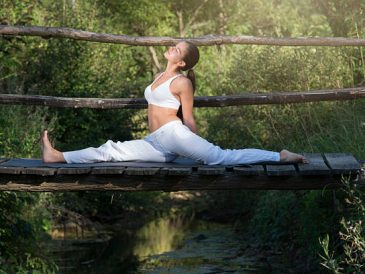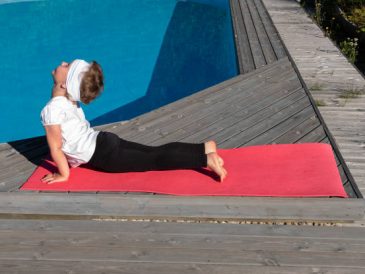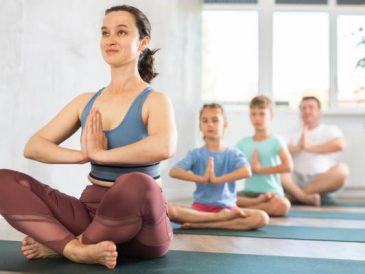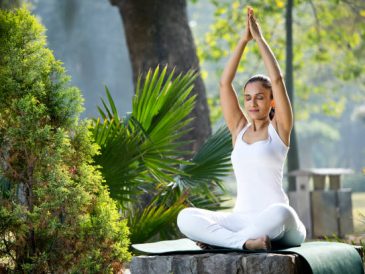It was no surprise that I found sequencing and theming fascinating as a former figure skater who also loved the choreography. I enjoyed taking classes from other teachers and adapting the sequences to my body, my mood or that of my students. My most effective practice method was to spend time on my mat at home and explore different postures. I became more aware of my language and my cadence. I also realized the value of sharing my experience with anyone who attended one of my classes.
As I have learned more about yoga and my teaching style, I discovered that certain principles inspire me to create and teach sequences accessible to all and effective for my students (and mine). You can read my favorites, and I hope they will inspire you.
Why is it important to them?
The golden thread that ties the experience, breadth and poses together is called theme. It’s what allows students to feel fully present for 90 minutes.
The first step in creating a yoga class is to decide where you will focus and what your students should feel after each practice. It’s OK not to be able to them. Get connected to your teaching community to find support from other teachers who have found a way to teach that works for them. They are also open to exchanging ideas and sharing their knowledge.
Take a look at the “Why”
You can make your yoga classes a simple or complex matter by naming them. If you prefer a simpler approach to the theme, start by asking the “Why”.
- What made me choose an asana sequence or write it?
- What is the point of sharing this information with my students? What does it mean for them?
The first step in allowing the theme to “reveal itself” is asking the why. It is worth taking a moment to understand the reasons you teach what you are doing and how it will benefit the people in your class. This will enable you to identify patterns that create transformative classes when paired with the right mood, dharma, and words.
Each class can have a different theme. You can change your theme for each class weekly, monthly or quarterly, depending on how broad you wish to make each subject or theme. You can make them an integral part of your learning because there will be plenty of opportunities for inquiry and research.
Using a particular calendar to theme your classes
A calendar model that you like is a great way of organizing yourself and focusing on your classes.
You can base your calendar models on:
- The four seasons could be considered Ayurvedic.
- The zodiac/horoscope
- The phases and movements of the moon
- Your culture has main holidays and special dates.
- Equinoxes, solstices (also possible with an Ayurvedic approach).
- You can connect threads through your workshops, classes, or retreats. They evolve with significant dates.
Music to animate your classes
Connecting your classes to your playlists is another great way to explore themes. I choose music and lyrics that are meaningful and that reflect the feelings I want to instill, the energy I hope to invoke through certain authors and genres.
To inspire your theme, you could use a line from the song, a poem, or a piece of writing. A few of my yoga classes were inspired by the song “Everything is Everything” from Lauryn Hill.
Using layers to morph your classes
There are many ways to explore yoga. More people are embracing yoga’s roots and origins.
You can use these elements to create a cohesive theme for your class.
- Style of yoga (i.e., Hatha, Vinyasa, Gentle, power, yin, etc.)
- The selection of asanas (Which poses should I use in my sequence?)
- Yogic philosophy (Will you speak on any aspect of philosophy related to traditional texts?
- Breathwork (Will there be pranayama included in my class? How will it be introduced?)
- Mudras (Will you include any mudras, and for what purpose?
- Mantras (Will you include any chanting, mantras, and for what purpose?
Classes that focus on one aspect of yoga
For those who are more fitness-oriented, you can focus on specific physical aspects of yoga.
- Heart-opening: Focus on front body opening and emotional release.
- Core strengthening: Focus on positions that promote and strengthen core stability.
- Hip-opening: Emphasizes creating space in the lower body and releasing tension in the hips, lower back, and legs.
- Balance and Concentration: Learn how to balance postures that require presence or concentration to maintain stability on the mat.
Here are some themes to help you share yoga’s spiritual and energetic benefits with your students.
- Chakra Balancing: Take a look at each Chakra for a set amount of time and use different yoga resources such as certain postures, breathing work mantras, meditation, visualization, etc.
- Grounding: Students are encouraged to connect with the Earth, themselves, and the entire class experience through a sequence of language and sequence.
- Koshas exploration: Advanced students may find it a great way to deepen their practice.
- Energizing: Move people through an intelligent, fun sequence with room for self-inquiry and breath. This will leave them feeling refreshed and empowered.
